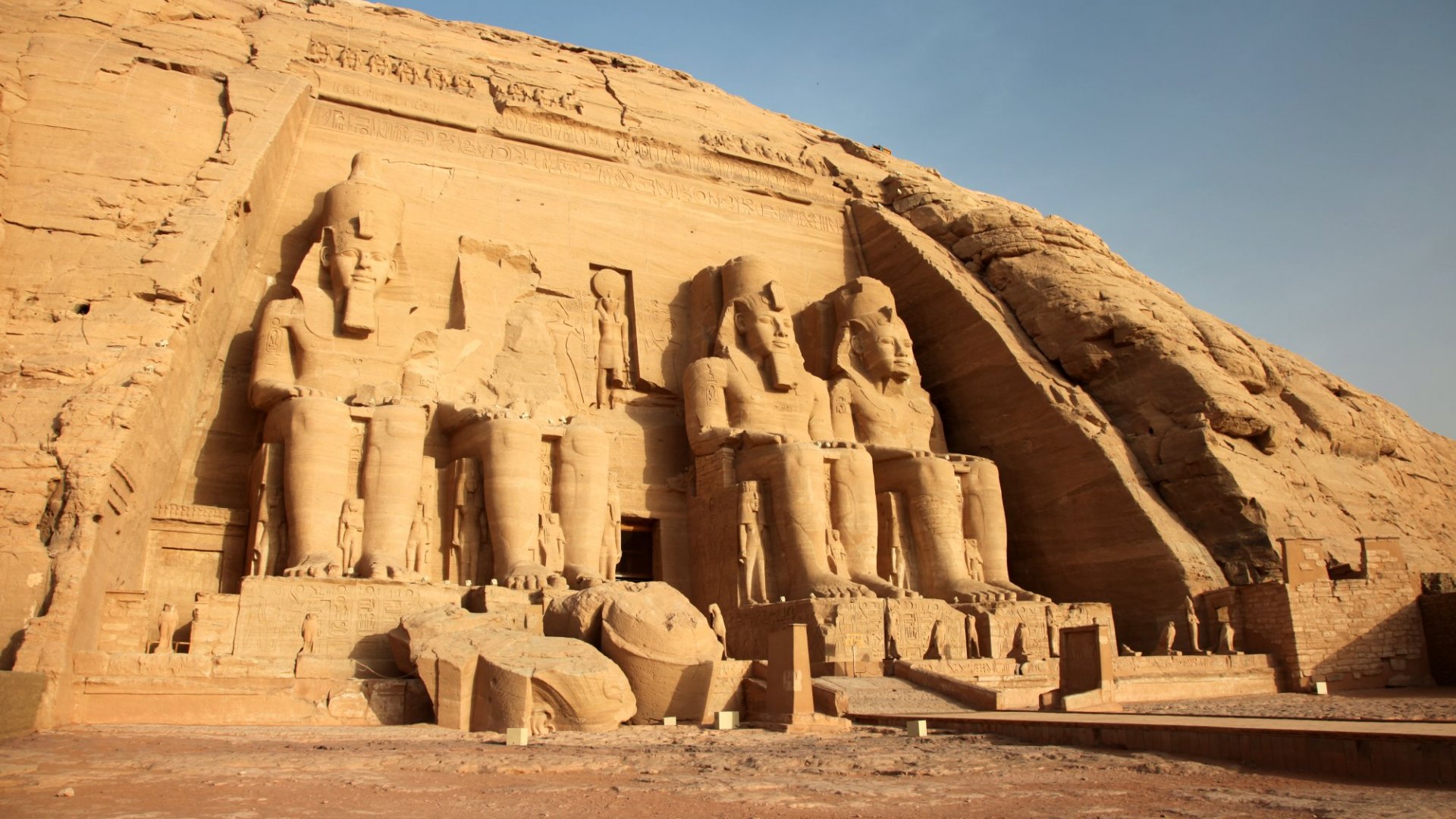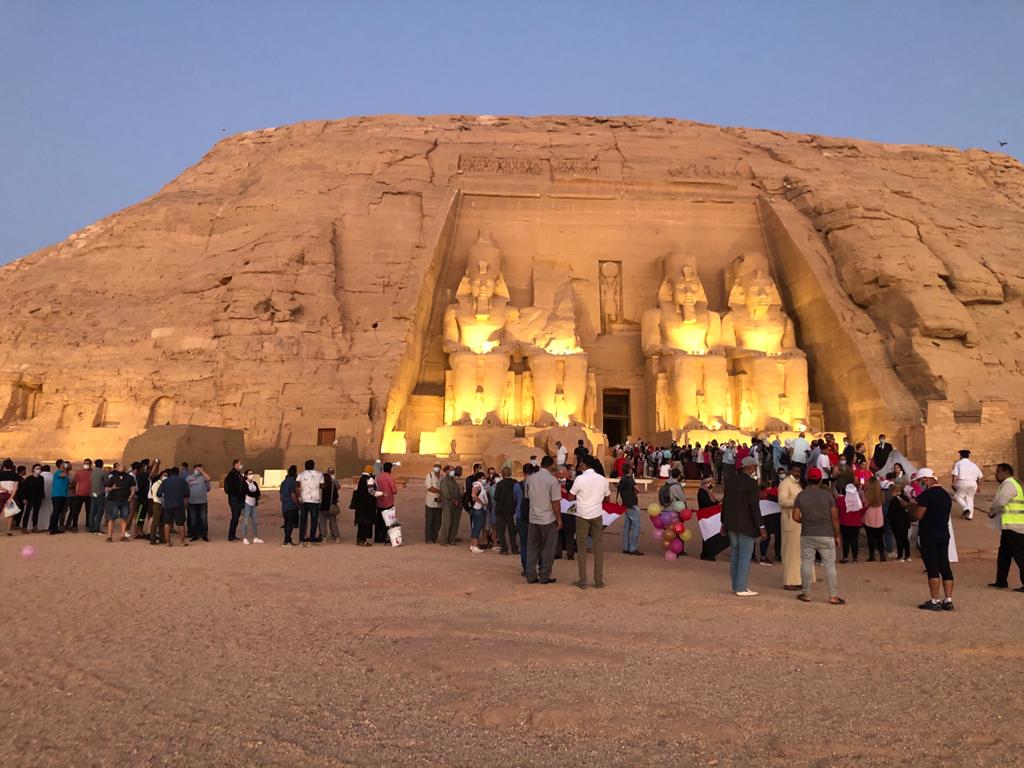In the golden sands near the southern border of Egypt, facing the rising sun, two colossal temples emerge from the rock like a vision from the past. This is Abu Simbel, a monument to power, divinity, and eternal legacy. Built by Pharaoh Ramses II during the 13th century BCE, Abu Simbel is more than a temple—it's a statement. A declaration carved in stone.

The Great Temple of Ramses II stands as the main attraction. Four seated statues of the king, each standing 20 meters tall, guard the entrance with quiet strength. Inside, the walls are covered in battle scenes and divine tributes. Ramses is shown not only as a warrior but as a living god, equal among the deities of Egypt.
Next to it, the Temple of Hathor—dedicated to both the goddess and to Queen Nefertari, Ramses’ beloved wife—is smaller but no less enchanting. This dual dedication is rare and a testament to the queen’s revered status. It’s one of the few temples in Egypt where a female figure stands equal in scale to the pharaoh.
One of the most astonishing features of Abu Simbel is its solar alignment. Twice a year, on or around February 22 and October 22, the rising sun pierces the temple’s sanctuary, illuminating the statues of the gods—except for Ptah, the god of the underworld, who remains in shadow. This precise design showcases ancient Egypt’s astronomical knowledge and spiritual symbolism.

In the 1960s, Abu Simbel was threatened by the rising waters of Lake Nasser, created by the construction of the Aswan High Dam. In a remarkable international effort, the entire temple complex was cut into blocks and relocated—preserved stone by stone, on higher ground.
Visiting Abu Simbel feels like stepping into a myth. It is awe-inspiring in scale, rich in symbolism, and wrapped in desert silence. Whether you arrive by plane or take the early morning drive from Aswan, the experience will leave you breathless.
Ready to witness Ramses' legacy? Explore our Abu Simbel day tours and Aswan packages and stand before the giants of ancient Egypt.